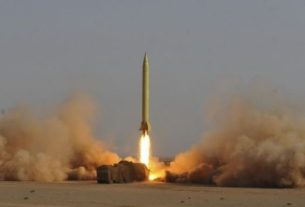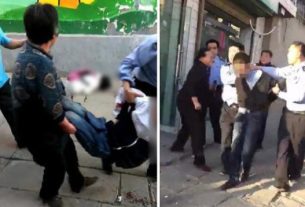There were protests in southeastern Iran on Friday, according to images shared by human rights groups.
People took to the streets in Zahedan, the capital of Sistan-Balochistan province, as sweeping anti-government demonstrations in the country enter their fourth month.
Sparked by the death of Mahsa Amini in September, unrest in Iran has morphed into one of the largest challenges to the country’s Islamic government in history.
Protesters chanted “death to the dictator”, in reference to the Supreme Leader Ayatollah Ali Khamenei, according to a video released by Iran Human Rights (IHR), an NGO based in Norway.
Other images from Zahedan show crowds of men, some holding posters with anti-regime slogans, and a group of women dressed in black walking down a street. They were also chanting.
Protests in Iran began on September 16 with the death of Amini, a 22-year-old Kurdish woman. She died after being arrested by the country’s so-called morality police for allegedly not wearing her hijab (headscarf) properly.
In solidarity with protestors, seven Iranians living in Germany took part in a hunger strike outside the Iranian consulate in Frankfurt. Some did not eat in 24 days, choosing only to drink water, but ended their protest on Friday.
Others did five days.
As of December 7, at least 458 people including 63 children and 29 women have been killed in the ongoing nationwide protests in Iran, according to Iran Human Rights, many thousands have been detained.
The Iranian government’s violent response has prompted international condemnation, sanctions and the country’s expulsion on Wednesday from a UN commission on women’s rights.
Impoverished and remote, Sistan-Balochistan is located on the border with Afghanistan and Pakistan.
It is populated by the Baloch minority who suffer discrimination in Iran, according to various NGOs.
Demonstrations have taken place in the capital of the province every week since more than 90 people were killed during rallies over the alleged rape of a 15-year-old girl by a police officer.
Experts say the Baluchis have been encouraged by protests sparked by Amini’s death.
In the first weeks and months, demonstrations were largely against the hijab, which Iranian women must wear by law, and in defence of women’s rights. But they soon morphed into anti-government protests.
Iran has also come under fire for planning the execution of 11 protestors so far.
Two executions have already taken place. Mohsen Shekari was hung on 8 December 8 and Majidreza Rahnavard on Monday. Both were aged 23.
Rahnavard was hung from a crane in public.
Amnesty International said on Friday that at least 26 people were at risk of execution in connection with protests in Iran.
Iran executes more convicts than any other country except China, according to the London-based human rights group.__Courtesy EuroNews





